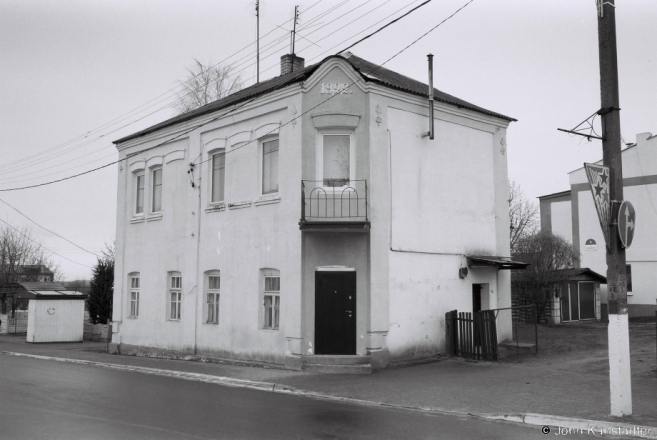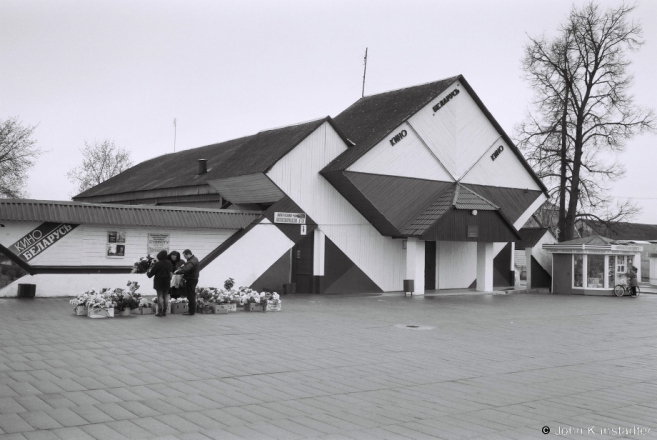Photographic survey of the patrimony of Njas’vizh, Stoubtsy District (Vishnjavjets, Markhachoushchyna, S’vjerzhan’ Novy, Stoubtsy, Stoubtsy-Astravy Road, Astravy, Dzjeraunaja, Khatava, River Usa, Tsjesnavaja) and Valozhyn District (Karaljeushchyna, Ivjanjets) 2015.
Фотавандроўка па спадчыне г. Нясьвіж, Стаўбцоўскага раёна (Вішнявец, Мархачоўшчына, Сьвержань Новы, Стоўбцы, дарога Стоўбцы-Астравы, Астравы, Дзераўная, Хатава, рака Уса, Цеснавая) і Валожынскага раёна (Каралеўшчына, Івянец) 2015 г.
Stoubtsy I, part I.
Despite the authorities’ consistent poor conservation and destruction of so much of Belarus’s urban patrimony from the Soviet re-occupation of 1944 until today, it is possible to find worthy surviving elements of this patrimony in many of Belarus’s smaller cities. Stoubtsy is fortunate in this regard, and this four-day series of photos is the first of several photographic surveys of this city and its admirable inhabitants which will appear on RadzimaPhoto.
Стоўбцы I, частка I.
Нягледзячы на сталую абыякавую ахову, незграбнае аднаўленьне ці зьнішчэньне ўладамі значнай часткі гарадской спадчыны Беларусі с другой савецкай акупацыі ў 1944 г. па сёньняшні дзень, яшчэ можна знайсьці вартыя элементы беларускай спадчыны ў шматлікіх меншых гарадах. Стоўбцам і стаўбчанам адносна пашанцавала ў гэтым дачыненьні, ды здымкі на працягу наступных дзён толькі першай з шэрагу фотаванровак па гэтым годным горадзе, якія будуць з’яўляцца на RadzimaPhoto.
An example of urban vernacular architecture from the early 20th century. From its shape and architectural details most likely originally a Jewish-owned building with both commercial and residential quarters. The date of 1922 on the bevelled corner indicates that construction or refurbishment took place at the beginning of the Second Polish Republic, when the western Belarusian lands were included in Poland and Stoubtsy was the Polish frontier city and train station on the Warsaw to Moscow train line.
Прыклад местачковага дойлідства раньняга 20-га ст. Паводле стылі й упрыгожаньня верагодна першапачаткова дык да 41-га г. будынак належаў жыдоўскай сям’і як камерцыйны-жылы дом. З даты 1922 на рагу будынку можна точыць, што будынак быў пабудаван ці адрамантаван на пачатку Другой Рэчы Паспалітай.
At first glance one might be tempted to dismiss this cinema as a jarring late-Soviet attempt at neo-Suprematism. However, the building’s facade demonstrates someone’s imaginative approach in sharp contrast to the stock phony classicism (“neo-Repressance”, as many Belarusian conservationists call it) of so many Soviet cinemas and other public buildings from the late- and post-Stalin periods and brutalism of the period of stagnation under Brezhnev.
For another, more successful, example of imaginative Soviet architecture drawing on creative styles of the 1920s, see the photo of a neo-constructivist apartment building in the central-western Belarusian city of Snou from photos of the day for January 31, 2018.
На першы погляд фасада гэтага кіно лёгка можа правакаваць адмоўную ацэнку, кшталту неўдалая спроба ў стылі неасупрэматызму. Хаця будынак паказвае чыю вобразную творчасьць замест тыповага неарэпрэсансу ці бруталізму вялікай большасьці савецкага дойлідства пасьля 1944 г.
Джя іншага ўзору вобразнага дойлідства познай савецкай акупацыі, які больш паспяхова выклікае творчыя 1920-ыя гады гл. фота жылага комплексу ў Снове з фотаздымкаў дня 31 студзеня 2018 г.

